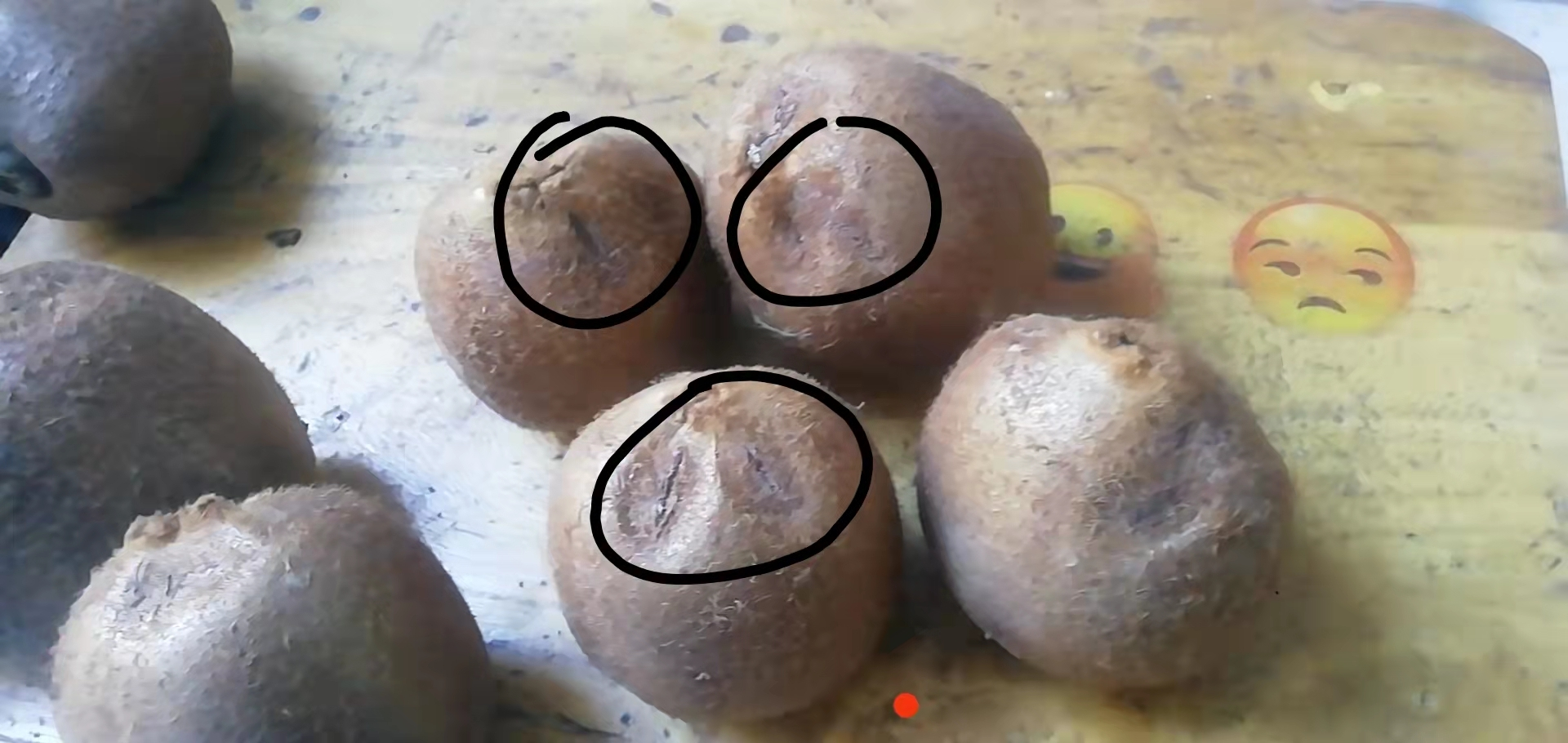Text/Fu Chunchang
Hello kiwifruit growers! In order to make our kiwifruit tree less sick and insecticidal, the tree is strong, and more fruits will be hung up in the next year, so as to achieve the purpose of high yield and stable yield and high efficiency for consecutive years, after the kiwi fruit is picked, the following things must be done in time.
Kiwifruit tree fruit after the harvest to the leaves just backward this period, is the late rainy season in the north, the humidity in the field is large, the temperature is still high (low temperature is above 6 degrees), is conducive to the occurrence and spread of pathogens, at this time is the peak period of the kiwi autumn canker disease and the winter potential period of fruit and leaf diseases; and the traumatic mouth (saw, shear, mechanical wound, fruit stalk mouth and petiole mouth, etc.) is the susceptibility area of germs.
Therefore, we must do a good job in the prevention and pest prevention work during this period. During this time, you must spray 2 to 3 times of insecticides in your own garden, mainly to prevent canker disease, soft rot, ripe rot and leaf diseases of kiwi trees and later insect pests. The aim is to minimize the number of pests and diseases in your garden and lay a good foundation for the next year's pest control work. For gardens with severe ulcer disease, after harvesting the fruit, you can spray the insecticide fungicide drug twice (about 1O day apart). And when spraying, the front and back of the leaves, branches, trunks and the ground should be sprayed in detail, do not leak dead corners, never leave living space for germs, only in this way can play a good anti-pleasant effect.

Here, I recommend the following prevention and control plans to farmers for your reference.
(1) Bacillus amyloidum (or Bacillus subtilis) 600 to 800 times + Methyltrophrum (50% suspension emulsion or 80% wettable powder) 600 to 800 times + 2.5% green kung fu 1500 times + urea 333 times (that is, 100 pounds of water plus 3 two urea).
(2) 6% Chunlei King Copper 600 to 800 times (or 3% mesophyticin 500 times) + 43% pentrazol 1000 times + perchloromethyl vermicillin (or chlorpyrifos) 1000 times + urea 333 times (that is, add 3 or 2 urea per 100 catties of water).
Before the kiwi fruit is picked, according to the size of the tree body in the garden, the growth of the tree body in the current year and the predicted yield of the next year, calculate the total amount of fertilizer required for the next year (including organic fertilizer, fungal fertilizer, multi-micro fertilizer and a large number of element fertilizers, etc.), and then calculate the amount of autumn base fertilizer according to 60% of the total amount of the whole year, and buy it in advance. When the fruit is finished, apply it to the ground in time, the sooner the better. Because the kiwi tree in the solar calendar from early September to early November is the third small peak period of kiwi root growth, but also the late nutrient accumulation period of the kiwi tree, the fertilizer applied at this time is easy to transform and the fruit tree to absorb; the broken roots are also easy to heal. Therefore, after the kiwi tree fruit is harvested, we must seize the time to apply the autumn base fertilizer, the sooner the better. Kiwi young trees can take the method of expanding the plate year by year, and apply the base fertilizer by the method of strip ditch (about 30 cm deep and about 45 cm wide) or ring ditch; large trees can take the scattered rotary tillage method to apply the base fertilizer, and most of the fertilizer should be applied to a circle of 60 cm in the vertical projection of the canopy; for the soil around the river, the amount of autumn base fertilizer can be appropriately reduced, so as not to leak fertilizer and cause waste. It is better to take the method of feeding less and eating more meals throughout the year.
In the year-round management of kiwifruit, drying is also a good way to prevent frost damage and ulcer disease, this work is done well, and the prevention of canker disease can play a very good role. Generally in the spring and autumn, it is better to apply once each time, especially to grasp the dry painting before winter, for the park where ulcer disease occurs more seriously, it can be applied once after fruit picking to before winter. It can effectively control the spread and occurrence of canker disease, and can also play a certain antifreeze effect in winter, especially for trees under 5 years old, especially for trees with an age of less than 5 years.
Therefore, after the harvest of fruits, it is also necessary to do a good job of drying the work, and when drying, it must be carried out after 9:00 a.m. to 4:30 p.m. on a sunny day, and it is necessary to ensure that the sap on the trunk is dried before sunset. It is better to apply the drying agent to white. Only by doing a good job in the management of kiwifruit in each season can fruit trees grow normally and robustly, less sickly, and can they produce high and stable yields year after year.